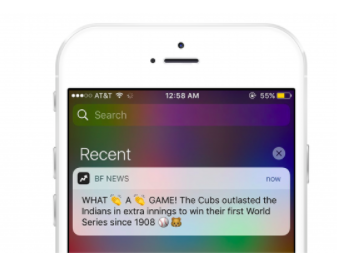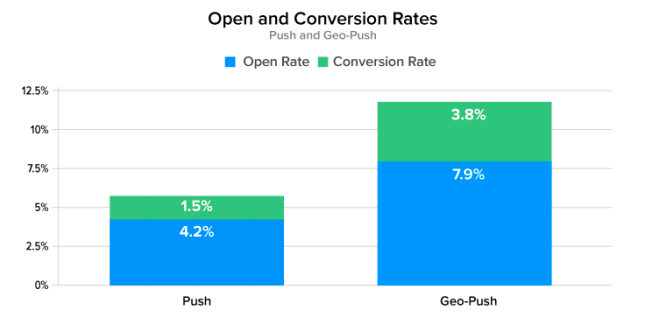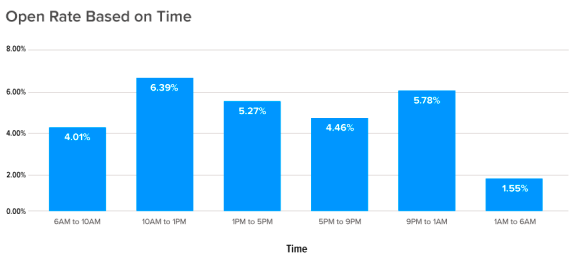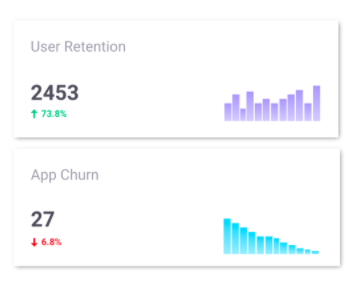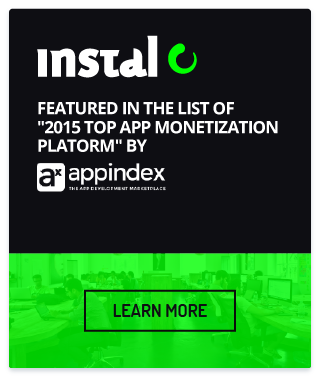The Power Of Push Notifications
Push notifications are one of the most powerful tools at marketers’ disposal, granting them direct access to the users by the way of their smartphone home screen. Push notifications have revolutionized the way brands engage with their customers, boosting conversions, and engagement. Compared to traditional email, push notifications receive 50% more opens, which means 50% more opportunities to entice customers with updates from product launches, flash sales, app exclusives, events.
What push notifications are
Push notifications are defined as automated messages that can reach audiences when the application is not open, anytime, and anywhere. In order to receive a push notification, a user is required to install the app and grant permission for that app to send messages to their devices. Once the permission is granted, marketers can start sending instant informative, promotional, and even interactive actionable messages. Push notifications are an effective direct channel of communication. In fact, they will pop up even if the user is not using his device, alerting him of urgent issues and enticing them to take action.
Type of push notifications
There are various types of notifications, serving different scopes.
1. Informative notifications
Informative notifications include reminders, updates, and alerts. Informative mobile push notifications are perfect for fitness and sports apps, job portals, educational apps, travel or taxi apps, and social and messaging apps.
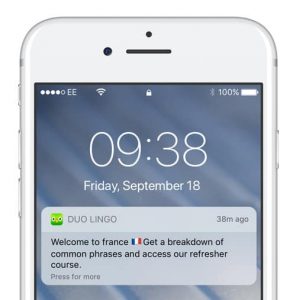 Update notifications inform users about improvements to an app, suggesting them to install the new version or to take a look at the brand new features. This type of notification is used to underline how a brand is constantly working to improve the user experience.
Update notifications inform users about improvements to an app, suggesting them to install the new version or to take a look at the brand new features. This type of notification is used to underline how a brand is constantly working to improve the user experience.
Reminder notifications are messages sent to users in order to remind them to do a certain action. For example, if they have a meeting scheduled for a specific day, reminders would be useful to recall to them the event.
Alert notifications inform users when someone has interacted with them. Alerts can be used for informing users when they receive a message when someone has liked or commented on their social media posts.
2. Location-based notifications
Location-based notifications, also known as geolocation notifications, are those messages triggered when a user physically moves near a specific geographic area in real-time. They are usually sent using beacon or geo-facing. In order to receive geolocation push notifications, users need to have previously agreed to share their location through their mobile devices. Geolocation notifications are great for sending date match notifications, finding nearby stores, building food and drink, or for hotel and travel apps.
3. Re-engageent notifications
Re-engagement push notifications are designed to entice users to come back to an app by reminding them of exactly why they downloaded the app in the first place. The purpose of these notifications is to motivate people. For example, if users complete a workout with a fitness app, the app can send notifications to congratulate them on their progress. Re-engagement apps are suitable for fitness apps, e-commerce apps, music apps, and many other types of apps, and can remind users to launch the app keeping them engaged when they are slipping away.
4. Promotional notifications
Promotional push notifications alert users about exclusive offers, giveaways, or sales, encouraging them to make purchases. The purpose of this type of notification is to urge users to take the desired action. For example, travel apps allow users to set up personal notifications for deals on dates and destinations. Users will then receive alerts when the price for these dates or destinations is reduced to the desired one.
Promotional notifications can be applied to a variety of app categories: online shopping, games, travel, fitness, etc.
5. Order notifications
Order push notifications are designed to alter users about what’s going on with their orders. They can contain information about the order confirmation, order status updates, tracking, and receipts. This type of notification is particularly useful for e-commerce and shopping apps and food delivery apps.
6. Trivia notifications
The purpose of push notifications is to engage with uses by sending them entertaining creative messages. Trivia push notifications can be used by any app, but they are particularly useful for news apps that can send a notification repeating an article’s headline in order to convince readers to open the app.
How to set up a successful push notification campaign
Push notifications can either be your best friend or your worst enemy. If done right they can boost engagement and conversions, if set wrong they can lead to an increase in app abandonment and churn.
A successful push notification campaign requires 4 elements.
1. Getting users opt-in.
In 2017, 53% of users have enabled push notifications on their mobile devices. Despite this, the percentage of opt-in rate has barely increased over the last few years. The main reason is that marketers tend to ask for opt-in permission too early in the process. Before asking push notifications permission, they need to build trust. Users have to be convinced that these push notifications will truly add value to their experience.
2. Personalization.
In 2017, 85% of push notifications sent were personalized and segmented. Over time, marketers have understood that the key to success lies in tailoring the message to end-users. An effective tailoring activity takes into account user attributes (as name, age, language, and behavioral factors as “added item to the cart” or “subscribed x days ago”) to set dynamic messages.
Dynamic messages are crafted push notifications combining profile and behavioral data to speak directly to users. Segmented push notifications that use dynamic messages have an open rate of almost 9%.
3. Geo-push notifications
According to a Localytics survey, location tracking is one of the most effective triggers for push notifications. This type of notification is opened twice as much and converted three times as frequently as regular notifications.
Geo-push notifications are usually sent immediately or just after someone enters a location, determining a sense of urgency that entice people to take the desired action.
4. Timing and frequency
There is no perfect time to send a push notification. Nevertheless, when planning a push notification, marketers should take into consideration that users are more engaged on mobile for certain periods.
Individual factors contribute to how users will interact with the push notification:
- time zone, to avoid awkward timing and to understand when users are more likely to use their apps
- content, to schedule the push notification if it is related to a specific moment of the day or to actions taken within the app
Frequency is also essential when planning a push notification campaign. Sending too many notifications can negatively affect the user experience. It is also important to underline that there isn’t a specific and perfect frequency when it comes to push notifications. Frequency depends mostly on the industry.
In general:
Why push notifications are important
With almost 4 billion global mobile customers and almost 6 million apps, mobile marketers need a direct channel to communicate with their users, outperforming their competitors.
If set correctly, a push notification strategy can bring many benefits.
Push notifications boost user retention
Recent studies report that 21% of users abandon an app after one session and 72% of them churn within 90 days. Through the implementation of an effective push notification strategy, retention can be boosted and can increase by up to 50%. Push notifications that run during the first 90 days after the app download are particularly fruitful, as this period of time is critical to build trust and loyalty.
Push notifications improve user experience e drive engagement
Consumers crave personalized user experience: 58% of them are willing to trade their personal data for this.
Push notifications can boost personalized user experience exponentially. Content can be tailored based on data as name, location, age, buying history, and so on. Hyper-tailored and personalized push notifications can boost the open rate by up to 9% and almost 52% of users state they are more inclined to open and use an app if it’s clear that their user experience is tailored to their preferences.
Push notifications drive sales e increase revenues
Push notifications are a powerful tool to convert users into paying customers. People receiving a promotional push notification are 9 times more likely to make a purchase than those who do not. Push notifications containing a time-sensitive offer usually return the highest results.
Final thought
The power of push notifications has evolved over time and they are now one of the most valuable direct channels of communication with users. Push notifications boost engagement by almost 90% and have become crucial to any app marketing strategy.
The success of push notifications lies in their ability to deliver relevant and personalized content in an age where users are bombarded with empty marketing content. There is no perfect push notification strategy, it is all about experimenting to find the perfect push recipe for any audience and app business.
Our Push Notification Cross Network system reaches hyper-profiled users even when they are not browsing the internet, allowing our clients to boost user engagement while driving sales and increasing revenues.


